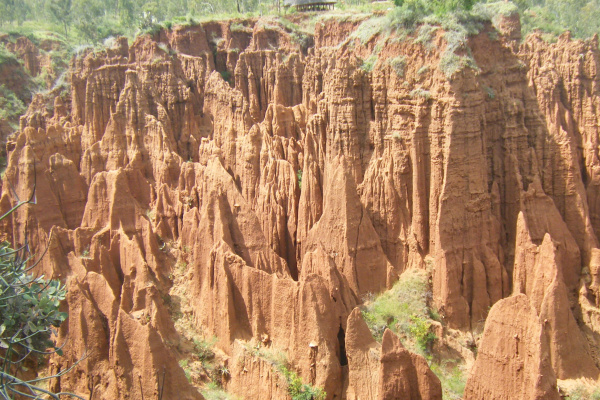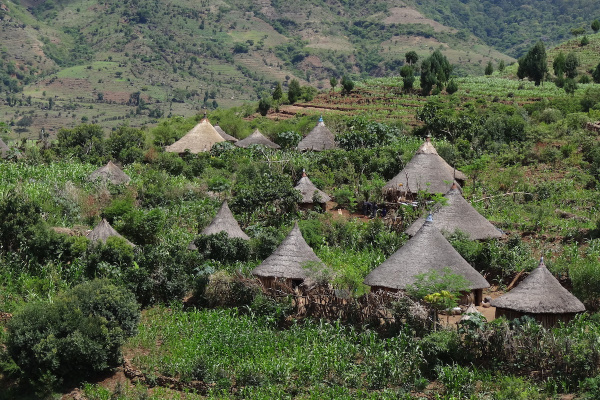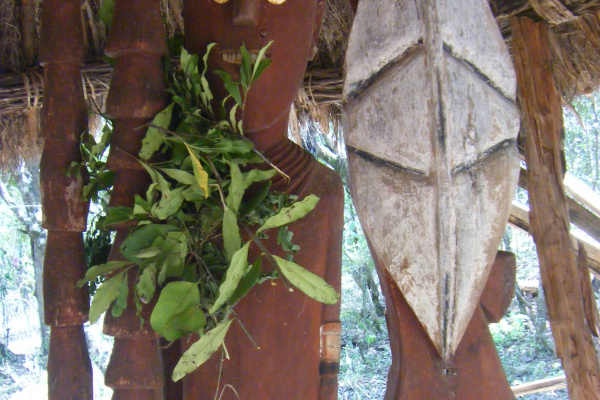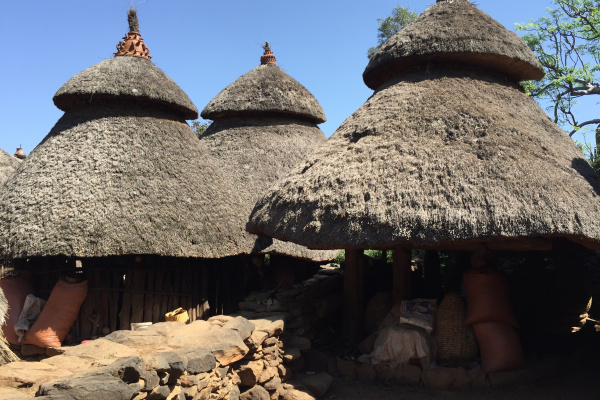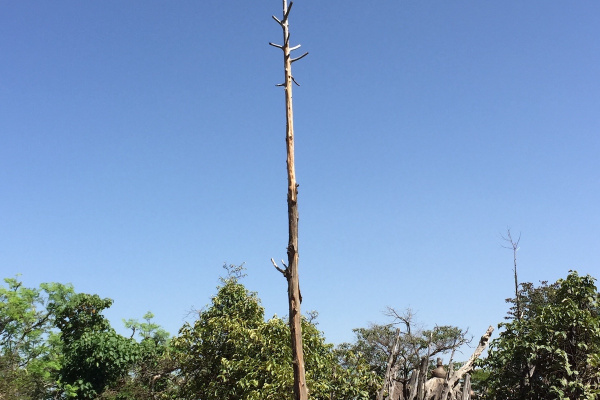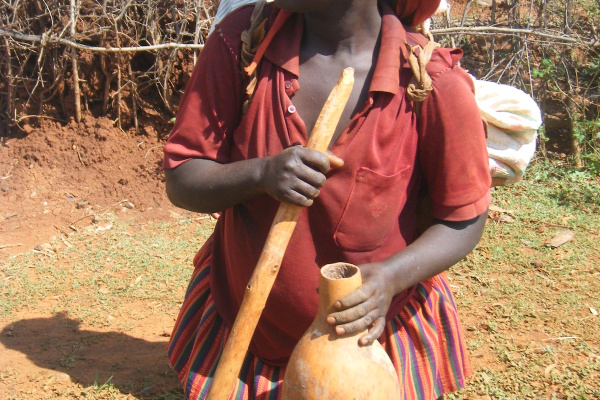The Konso people
Presentation
About 50 km south of Lake Chamo, entering the hilly country of the Konso, located to the east of the arid and bare plains of the lower Omo basin, the traveler is amazed by the meticulous contour of the terraced hills which cascade like steps of stairs.
The cultural landscape of the Konso country was chosen by UNESCO to join the world heritage list in 2012. Konso's entry into the world heritage should allow it to protect its ancestral culture.
UNESCO has distinguished this arid 55 km² site, its stone terraces and its fortifications, because it “constitutes a spectacular example of a living cultural tradition” dating back more than 400 years and because there are statues there of anthropomorphic wood which constitute “an exceptional and living testimony to funerary traditions on the verge of disappearing”.
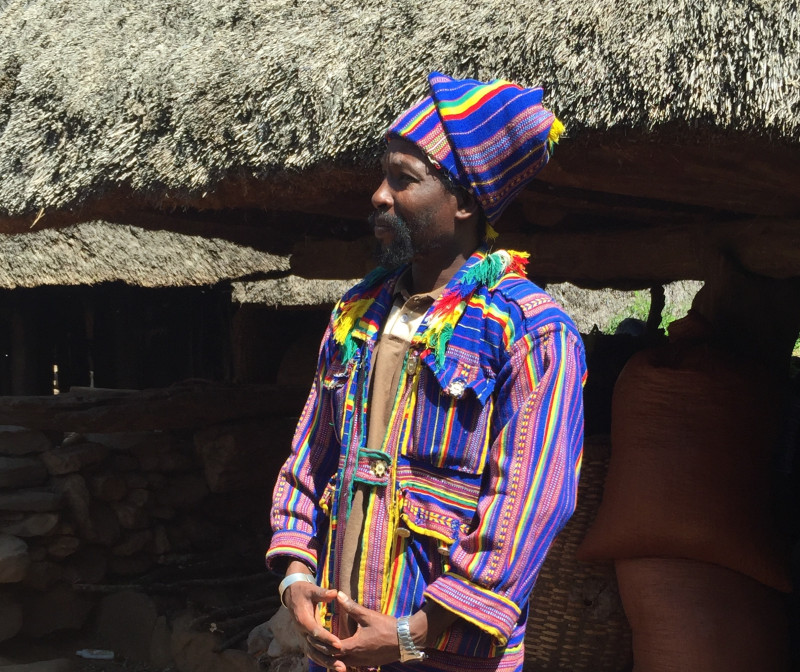
Well-protected villages
The Konso maintain few links with their past and their history. We know neither their country of origin, nor the time of their establishment in the region. However, their family and cultural traditions tend to show that they come from an amalgamation of neighboring Cushitic tribes.
The Konso are experienced sedentary farmers, the only ones in southwest Ethiopia to practice terrace cultivation on the sides of rocky hills. The dominant crops are cotton and different varieties of millet. The grains of the latter are ground by the women, then transformed into cakes which constitute the basic food of the Konso. Each family has a few head of cattle and its own plot of land that men and women work together.
Although the traditional characteristics of the Konso are similar to Cushitic cultures, their aesthetic canons, their crafts, the organization of their villages and their mode of agricultural exploitation differ. They have a cultural, social and economic entity of their own. They speak Konsigna, a Cushitic language close to the Oromo languages.
The appearance of Konso villages differs from the villages of other ethnic groups in the region. To defend themselves from attacks by wild animals and to protect themselves from mudslides, they surround their villages with a rampart of basalt and dried earth 3 to 4 meters high. Within the enclosure, the huts are so close together that their roofs sometimes overlap. The villages are densely populated and house an average of 2,500 inhabitants
A cultural wealth of the Konso ethnic group
Voici la traduction en anglais du texte que vous avez fourni :
---
Each family is composed of an average of five people. They live in an oval area of approximately 200 square meters, surrounded by a wall. The space reserved for livestock is usually at a lower level, separated from the living area by a small wall that prevents the animals from entering the family hut, which, according to Konso belief, would be a premonition of the death of the head of the family.
Members of the same group collaborate in the celebration of rituals, the construction of huts and walls, and the maintenance of terrace retaining walls. They also commonly participate in fieldwork, pottery, and the hollowing out of gourds to make containers for milk or butter.
Members of the same group consider each other as brothers and sisters, and sexual relations are prohibited. A complex system of age classes governs the lives of Konso males. In adolescence, young men enter the learning class of adult life; then they reach the class of warriors and landowners, and finally, in maturity, they attain the higher status of elders. The transition to a higher class or marriage is celebrated with dances, songs, and rituals deeply rooted in Konso culture.
During ceremonies, the Konso, who are very musical, play the krar, a type of popular lyre found in other regions of Ethiopia, the dita, a kind of five-string guitar, and the Pan flute.
The rituals associated with ancestor worship play a vital role in the Konso community. They promote group belonging and solidarity among its members. The Konso erect totems (about 1 meter high) made of carved wood, called wakas, on the graves of their elders, by the roadside, or in the fields that the deceased used to cultivate. The deceased is depicted alongside his wife, children, his enemy if he showed bravery and valor, or a fierce animal, such as a lion, leopard, or crocodile, if he distinguished himself as a hunter. He is adorned with a frontal phallic ornament and equipped with a penis, while his defeated enemy is carved without his virile attributes.
Each village is autonomous and governed by a council of elders. Since villages are never far from one another, the inhabitants maintain economic and social relations.


